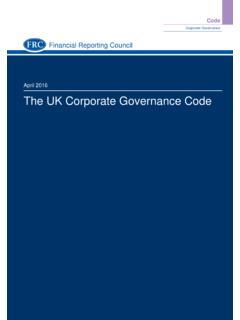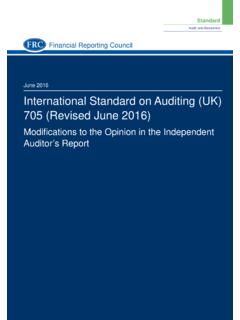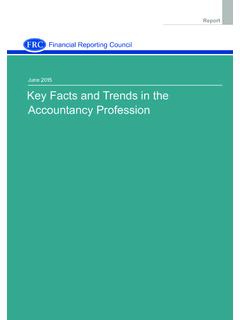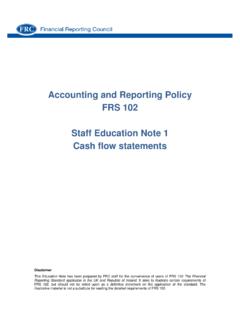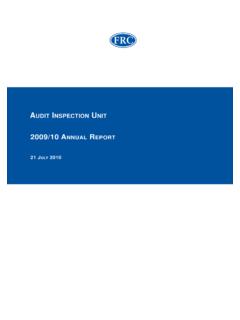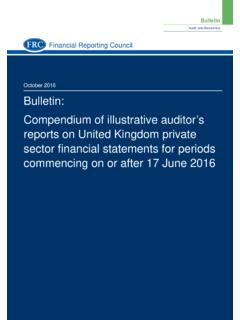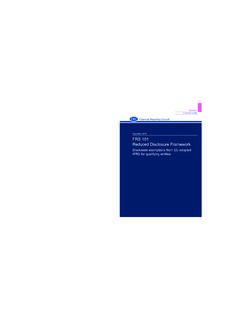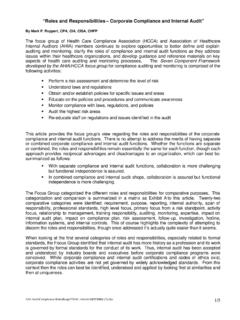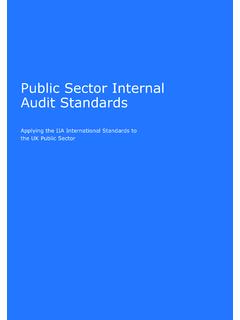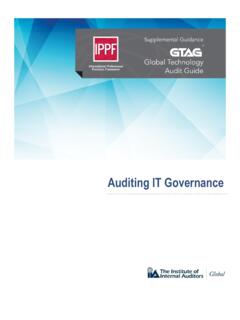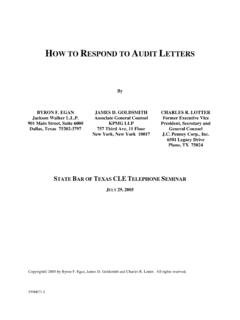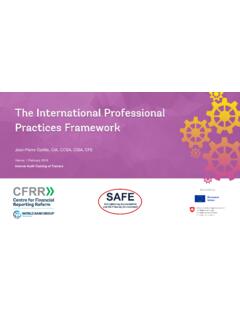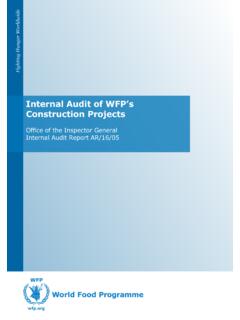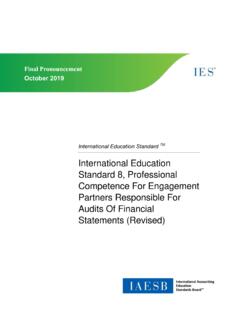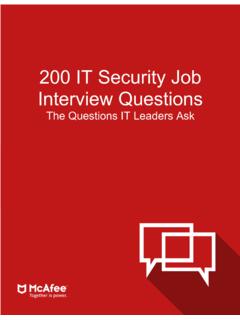Transcription of Guidance on Risk Management Internal Control and …
1 GuidanceCorporate GovernanceSeptember 2014 Guidance on Risk Management , Internal Control and Related Financial and Business ReportingFinancial Reporting CouncilThe FRC is responsible for promoting high quality corporate governance and reporting to foster investment. We set the UK corporate governance and Stewardship Codes as well as UK standards for accounting, auditing and actuarial work. We represent UK interests in international standard-setting. We also monitor and take action to promote the quality of corporate reporting and auditing . We operate independent disciplinary arrangements for accountants and actuaries; and oversee the regulatory activities of the accountancy and actuarial professional FRC does not accept any liability to any party for any loss, damage or costs howsoever arising, whether directly or indirectly, whether in contract, tort or otherwise from any action or decision taken (or not taken) as a result of any person relying on or otherwise using this document or arising from any omission from it.
2 The Financial Reporting Council Limited 2014 The Financial Reporting Council Limited is a company limited by guarantee. Registered in England number 2486368. Registered Offi ce: 8th Floor, 125 London Wall, London EC2Y 5AS Financial Reporting Council Contents Section 1: Introduction .. 1 Section 2: Board Responsibilities .. 5 Section 3: Exercising Responsibilities .. 6 Section 4: Establishing the Risk Management and Internal Control Systems .. 8 Section 5: Monitoring and Review of the Risk Management and Internal Control Systems . 10 Section 6: Related Financial and Business Reporting.
3 12 Appendix A: Going Concern Basis of Accounting and Material Uncertainties .. 16 Appendix B: Longer term Viability Statement .. 19 Appendix C: Questions for the Board to Consider .. 21 Appendix D: UK corporate governance Code and Other Regulatory Requirements .. 23 Guidance on Risk Management , Internal Control and Related Financial and Business Reporting (September 2014) Financial Reporting Council 1 Section 1 Introduction Applicability 1. This Guidance revises, integrates and replaces the current editions of the Financial Reporting Council s ( FRC ) Internal Control : Revised Guidance for Directors on the Combined Code and Going Concern and Liquidity Risk: Guidance for Directors of UK Companies , and reflects changes made to the UK corporate governance Code ( the Code ).
4 2. It aims to bring together elements of best practice for risk Management ; prompt boards to consider how to discharge their responsibilities in relation to the existing and emerging principal risks faced by the company; reflect sound business practice, whereby risk Management and Internal Control are embedded in the business process by which a company pursues its objectives; and highlight related reporting responsibilities. 3. While it is hoped that this Guidance will be useful to other entities, it is primarily directed to companies subject to the It applies to such companies for accounting periods beginning on or after 1 October 2014.
5 Background 4. The Code defines the role of the board as being to provide entrepreneurial leadership of the company within a framework of prudent and effective controls which enables risk to be assessed and managed . Effective development and delivery of a company s strategic objectives, its ability to seize new opportunities and to ensure its longer term survival depend upon its identification, understanding of, and response to, the risks it faces. 5. Economic developments and some high profile failures of risk Management in recent years have reminded boards of the need to ensure that the company s approach to risk has been properly considered in setting the company s strategy and managing its risks .
6 There may be significant consequences if the company does not do so effectively. 6. Good stewardship by the board should not inhibit sensible risk taking that is critical to growth. However, the assessment of risks as part of the normal business planning process should support better decision-taking, ensure that the board and Management respond promptly to risks when they arise, and ensure that shareholders and other stakeholders are well informed about the principal risks and prospects of the The board s responsibility for the organisation s culture is essential to the way in which risk is considered and addressed within the organisation and with external stakeholders.
7 1 The UK corporate governance Code applies to all companies with a Premium listing of equity shares on the London Stock Exchange regardless of whether they are incorporated in the UK or elsewhere. 2 Principal risks are defined in the Guidance on the Strategic Report (2014) see: A principal risk is a risk or combination of risks that can seriously affect the performance, future prospects or reputation of the entity. These should include those risks that would threaten its business model, future performance, solvency or liquidity.
8 2 Guidance on Risk Management , Internal Control and Related Financial and Business Reporting (September 2014) 7. The Code was updated in 2010 to make it clear that, in addition to being responsible for ensuring sound risk Management and Internal Control systems, boards should explain the company s business model and should determine the nature and extent of the principal risks they were willing to take to achieve the company s strategic objectives. 8. The Code was further updated in 2012 to improve financial and business reporting by making it clear that the board should: confirm that the annual report and accounts taken as a whole is fair, balanced and understandable and provides the information necessary for shareholders to assess the company s position and performance, business model and strategy; and establish arrangements that will enable it to make this assessment.
9 9. In 2011 the FRC published the Boards and Risk report, which reflected the views of directors, investors and risk professionals and highlighted that the board s responsibilities for risk Management and Internal Control are not limited to the oversight of the Internal Control system. 10. In 2012 the Sharman Inquiry into going concern and liquidity risk concluded that the board s declaration of whether the company remained a going concern should be more broadly based than is required to determine the accounting approach to be taken.
10 11. Taken together, the conclusions of the two reports can be summarised as: the board must determine its willingness to take on risk, and the desired culture within the company; risk Management and Internal Control should be incorporated within the company s normal Management and governance processes, not treated as a separate compliance exercise; the board must make a robust assessment of the principal risks to the company s business model and ability to deliver its strategy, including solvency and liquidity risks .
